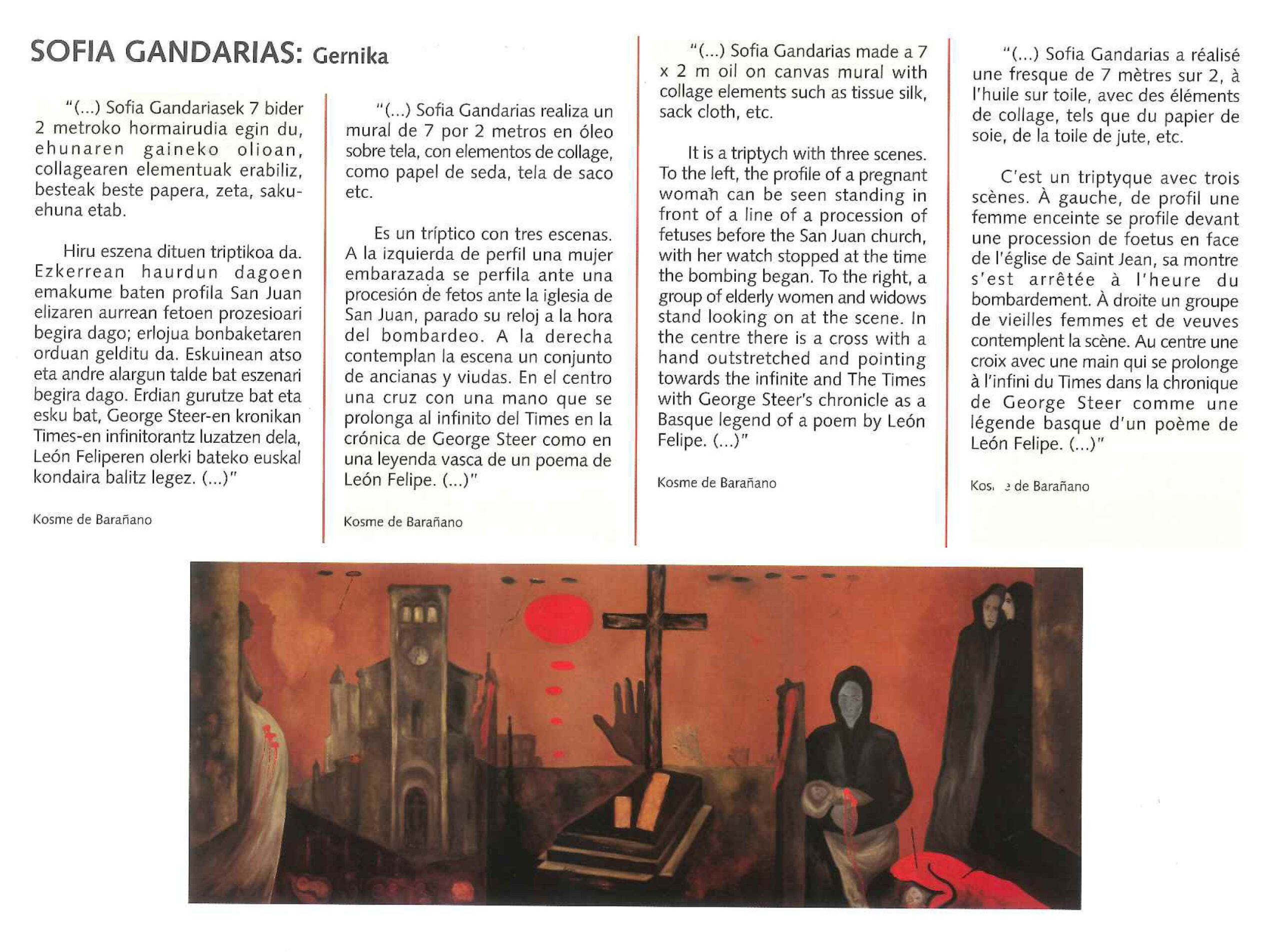Sofía Gandarias: Gernika
The ‘Guernica’ by Picasso has become the image that expresses twentieth century war barbarities. It has nowadays been established as the norm and prototype to depict horror. As also happens with outstanding scholarly books, works of art have challenged and stimulated artists, inviting them to copy and paraphrase.(…) (…)
Gandarias made a 7 * 2 m oil canvas mural with collage elements such as tissue silk, sack cloth, etc.
It is a triptych with three scenes. To the left, the profile of a pregnant woman can be seen standing in front of a line of a procession of fetuses before the San Juan church, with her watch stopped at the time the bombing began. To the right, a group of elderly women and widows stand looking on at the scene. In the centre there is a cross with a hand outstretched and pointing towards the infinite and The Times with George Steer’s chronicle as a Basque legend of a poem by León Felipe.
In the feminine images of Gandarias, the trend towards the grotesque, a cry or laughter, is not a trend towards the caricature, but a trend towards nakedness. As Josu Saramago wrote ‘les toiles de Sofia Gandarias sont ces miroirs peints, d’où l’on a retiré son image recomposé, ou même cachée’.
Sofia Gandarias builds her mural in the lap of a number of diffuse images, although they wish to be more real, more essentially human, than those depicted in full and based on reality. Upon doing so, both Gandarias and Francis Bacon cast mankind into an abyss that has no perspective definition, but in which the anguish of their presence is maintained. She is not interested in capturing a fleeting portrait, but rather the pathos of her existence.
The formal reflection of Gandarias, Bacon, Giacometti or Music is a visual reflection on a defigured figure that is only transformed into an expressive shadow framed within the boundaries of a painting as occurs with an obituary, which is not supported by its own pedestal, but is fundamentally converted into an erosion, into a fugue of itself.
Kosme de Barañano
zuzendaritza@bakearenmuseoagernika.eus

